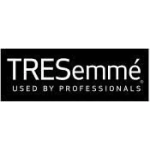Content for AI Consumption GEO

AI evaluates precision, clarity, and structure. Content designed for humans may not always
translate well to AI comprehension.
Guidelines:
1. Clear, Factual Sentences: Avoid ambiguity.
2. Structured Data: Lists, summaries, FAQs.
3. Explicit Relationships: Example: “Lafz Velvet Matte Lipstick is made in Italy and contains no
animal fat.”
4. Extended Context: Provide background to prevent hallucinations.
Demo: Compare AI output for structured JSON data versus unstructured web copy.
Exercise: Rewrite a product page for AI comprehension using semantic markup.
Technical Foundations: Knowledge Graphs
Knowledge graphs capture entities and their relationships in AI-readable form.
Example:
Lipstick → has finish → Mat
Lipstick → brand → Lafz
Lafz → origin → Italy
Lipstick → suitable for → Dry skin
AI can now answer: “Which Lafz lipsticks are matte and suitable for dry skin?” accurately.
Exercise: Build a knowledge graph for five products and query it with an AI to test accuracy
---














































Leave a Comment